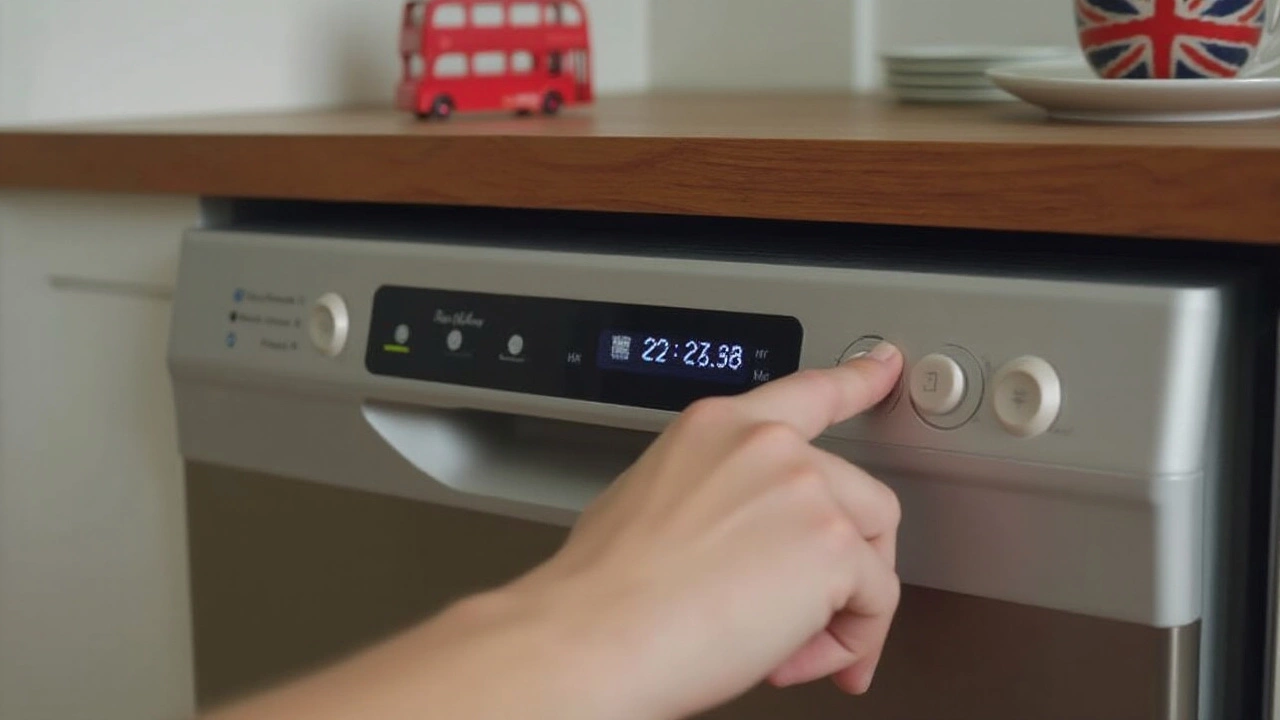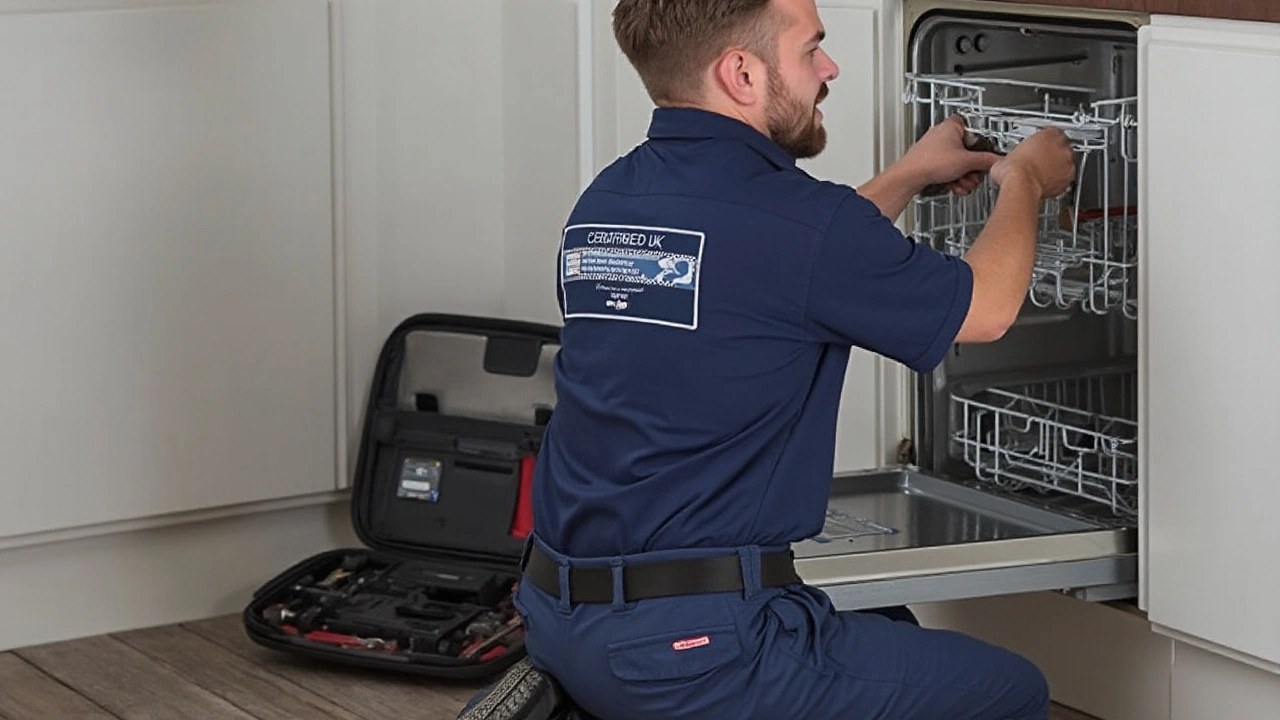Has your dishwasher become unresponsive just when you need it the most? Instead of dialing up your local repair service, try resetting it. Dishwashers, with their intricate blend of technology and waterworks, sometimes hit minor snags that can be fixed with a simple reboot.
Understanding how to reset your dishwasher can not only save you a callout fee but also empower you to troubleshoot minor issues on your own. Whether you're dealing with an error code or a complete cessation of the washing process, resetting might just be the trick to getting everything back on track. This practical guide will lead you through the steps to reset various models and share expert maintenance tips to keep your machine in top condition.
- Understanding the Need for a Reset
- Steps to Reset Different Models
- Common Signs Your Dishwasher Needs a Reset
- Pro Tips for Maintenance and Troubleshooting
Understanding the Need for a Reset
When your dishwasher unexpectedly stops performing its duty, it can throw a wrench in your daily routine. Understanding why a dishwasher reset is a good first step is crucial. Many times, dishwashers encounter minor software glitches, much like our computers, where a simple restart can solve the problem. Sensors and internal components can misinterpret data due to power surges, blockage, or even simple miscalculations. When this happens, the machine might either stop altogether or display cryptic error codes, leaving you scratching your head and fearing for the worst.
A reset is essentially a way to clear these momentary errors that are not caused by any physical defect in the machine. For instance, a common problem reported by many homeowners is seeing their machine stuck in one stage of the cycle without progressing. Resetting can free up jammed commands and breathe new life into the cycle. Sometimes, electrical interferences such as lightning can disrupt the appliance's memory. A reset helps realign and re-calibrate the settings back to factory choices.
This simple trick saves both time and money because it allows one to avoid unnecessary service calls. According to a home appliance editorial on Your Home magazine, “More often than not, most dishwashers encountering minor disruptions can be fixed by resetting.”
A quote further elucidates, "Knowing how to reset your dishwasher can save you upwards of $100 in callout fees," attests appliance expert, John Martin.
It's wise to know that a reset won’t fix mechanical problems like leaks or broken pumps; however, it works wonders for addressing sensor-related hitches. The reset button, or sequence, essentially allows the dishwasher to erase current misreadings and reboot to its start settings without losing any programmed cycles previously set by the user. It's a lifesaver for families who rely on their dishwasher to handle the bulk of daily cleanups. Becoming familiar with this process is incredibly empowering in maintaining household harmony. Just be sure you're aware of the different methods, as they differ slightly across brands such as Bosch, Kenmore, or Whirlpool.
Resetting not only can rectify issues but also helps prevent control panel unresponsiveness due to internal overloads. With various sophisticated components onboard modern dishwashers, a reset serves as a preventive measure ensuring that the machinery operates under the designed protocols efficiently. A dishwasher, much like any electronic with a circuit board, benefits from a clear start. Take care to reset your machine whenever you're faced with dysfunctional behavior before reaching for the phone. This simple action is often all it takes to escape what seems like an insurmountable problem at first glance.

Steps to Reset Different Models
Sometimes dishwashers, with all their whirring parts and flashing lights, have minds of their own. If, like me, you’ve ever stood there, dish towel in hand, staring at a blinking error code, you'll know the mix of confusion and helplessness it can stir. But resetting your trusty appliance doesn't have to be a Herculean task. Most modern dishwasher models, from Bosch to Whirlpool, come with specific reset protocols embedded in their operations. Understanding these can be like finding a secret backdoor that leads to solution city. Let’s dive in, and by the end of this, you might just become the tech-savvy hero of your household.
First, let's talk about Bosch dishwashers. Known for precision and German engineering, Bosch often requires a button press sequence to initiate a reset. Begin by pressing and holding the “Start” button for a few seconds until you see the display turn off. This process can sometimes take up to ten seconds, but persistence pays off. Once it powers down, release the button, and close the door – this kicks the machine back to life. It's a straightforward magic trick, really, that clears out the gremlins messing with your dish cleaning peace.
"An ounce of prevention is worth a pound of cure," noted famed inventor Benjamin Franklin, and this rings true in maintaining complex appliances like dishwashers.
Now, Samsung's dishwashers are a bit more intricate, much like their phones. They boast fancy digital displays that love to show error codes and often stump users. Start by pressing the necessary button labeled either “Cancel” or “Drain.” Afterward, you’ll want to hold down whatever button corresponds to starting the cycle. Here’s a fun tidbit: Samsung tends to use a combination of beeping sounds and light flashes, which, while initially perplexing, are meant to direct you towards the necessary repair path. Keep an ear and eye out – it’s their version of household charades.
For the ever-popular Whirlpool models, resetting is more about patience and less about button-mashing. You’ll often need to unplug the dishwasher from its power source entirely, letting it sit in digital silence for a couple of minutes. Upon plugging it back in, select the “Start” button, close the lid, and wait for it to calibrate internally. Imagine it as a yoga pose – just breathe and let it center itself! This technique resets the built-in microprocessor, which handles all the heavy-lifting of cycles and functions.
| Brand | Reset Process | Time Required |
|---|---|---|
| Bosch | Hold 'Start' button, close the door | 10 seconds |
| Samsung | Use 'Cancel/Drain', start cycle | Varies |
| Whirlpool | Unplug, wait, plug back in | 2 minutes |
As we delve into other brands, like KitchenAid and GE, you'll find that they house their resets deep in manuals that read like short novels. But hiring a repairman for such small matters should be seen as a last resort. Equipping yourself with knowledge doesn’t only empower you to fix these issues but also saves you extra bucks along the way. The trick lies in embracing the systematic approach that each model suggests and finding the calm before the click. Who knew that turning appliances on and off again could be so intricately scientific? Your next step could quite literally involve saving your dinner party.

Common Signs Your Dishwasher Needs a Reset
Have you ever reached for your dishwasher only to find that it is not behaving as it should? These modern appliances, designed to make our life easier, sometimes sputter and stall like any gadget. Understanding when a simple reset may be the answer can save you from potential headaches and even a costly repair bill. So, what should you look out for? One of the most common signs that a reset is needed is when your dishwasher is flashing error codes. These mysterious sequences of letters and numbers can indicate anything from a door latch problem to a clogged drain. Before you start dismantling parts to find the source of trouble, try a reset—it can help clear these codes and restart the machine's internal system.
Another telltale sign is an unresponsive control panel. Anyone who's tried frantically pressing buttons in hopes of some action can relate to the frustration of a blank control screen. The dishwasher might refuse to start, or the programs may not switch modes as intended. While this can signal a deeper electrical issue, many times, it’s just a temporary glitch wherein the electronics need a reboot. In an article from Household Appliance News, a veteran technician stated,
“Many modern dishwashers are a lot like computers—they occasionally freeze up and require a restart to function properly again.”This underscores the importance of a reset when the control panel misbehaves.
Strange noises erupting from your dishwasher can also be a sign. Now, most dishwashers don’t run silently, and some sounds are a normal part of their operation. Yet, if you start noticing abnormal clunks, whirs, or buzzing that seem out of character, consider hitting the reset button. It's akin to turning off an endless loop stuck on a glitch. Often, during a reset, the appliance reconfigures twitches caused by minor system errors or electrical surges. This can be a quick fix for what seems like an unusual noise symphony coming from the kitchen.
An overall decline in cleaning performance may also signal the need for a reset. Dishes emerging still grimy or with soap residue can result from miscalibrated sensors. These sensors dictate water levels and cycle times, and sometimes they need recalibrating to do their job right. By resetting, you allow the machine to return to its factory defaults, restoring proper function. Similar scenarios occur when your dishwasher takes an unusually long time to finish a cycle; it might think it needs more water or time than actually required.
Spotting water leaks around your dishwasher is another hint that a reset is in order. While leaks can indeed be a sign of more significant problems, they also stem from drain or valve issues often resolved by resetting the appliance. Perhaps there's a valve that didn't close properly due to an earlier error that wasn't cleared. Many problems that appear daunting are resolved after a simple reset gives the machine a chance to reset its valves and drainage systems.

Pro Tips for Maintenance and Troubleshooting
Owning a dishwasher brings convenience to your kitchen, yet like all appliances, it needs some care to perform optimally. Regular maintenance is essential to avoid sudden breakdowns and keep your dishwasher working efficiently. One of the first steps is routinely checking and cleaning the filter. A clogged filter can harbor leftover food particles, leading your dishwasher to work extra hard or even leave your dishes less than sparkling. Gently remove the filter and rinse it under hot water, scrubbing lightly with a soft brush if necessary. Doing this monthly can significantly improve your dishwasher's performance and lifespan.
Another critical aspect of dishwasher care is ensuring the spray arms are not blocked. Minerals in water and soap residue can clog the holes, reducing the rotation and reach of the water streams. You can easily disassemble most spray arms for cleaning. Use a toothpick or similar tool to clear out clogged holes, and rinse the arms under running water. Reattach them securely to ensure they're spinning freely. This simple step is crucial for clean dishes and can often go overlooked.
It's also beneficial to regularly inspect the rubber seals around the door. These seals can collect grime, leading to imperfect sealing and causing leaks. Wipe them down with a damp cloth soaked in soapy water every few weeks to prevent this. An eye for leaks around the edges can save you from water damage to your kitchen floors. Additionally, running an empty cycle with a cup of vinegar once a month can help in scavenging any lingering odors and keep your machine smelling fresh.
Troubleshooting is as important as maintenance. If your dishwasher isn't cleaning correctly, check if it's level on the floor. A sloped dishwasher may affect the drainage and cleaning efficiency. Adjust the feet to level it, which often resolves strange noises or incomplete cycles. If specific error codes show up, your user manual can be a lifesaver, guiding you on what each code signifies and how to troubleshoot accordingly.
"Performing regular maintenance on your dishwasher can save you both time and money," says Alex MacKenzie, an appliance repair specialist. "It's surprising how often small, uncomplicated steps can prevent larger issues in appliance care."
If you ever face persistent issues beyond these basic fixes, an apple-to-apple comparison with your warranty coverage can direct you to whether a professional repair is warranted. Knowing your warranty terms can significantly reduce costs in the bigger picture.
Finally, an often overlooked tip is to load your dishwasher properly. Dishes should be placed so water can reach all surfaces, avoiding stacking or crowding racks. Cutlery should be placed loosely in their rack without overfilling, letting the water swirl freely. Following your model's specific capacity recommendations guides you to use its features fully. By keeping these normal yet helpful practices in mind, you maximize the efficiency and longevity of your utility partner in the kitchen.


